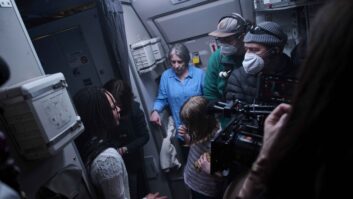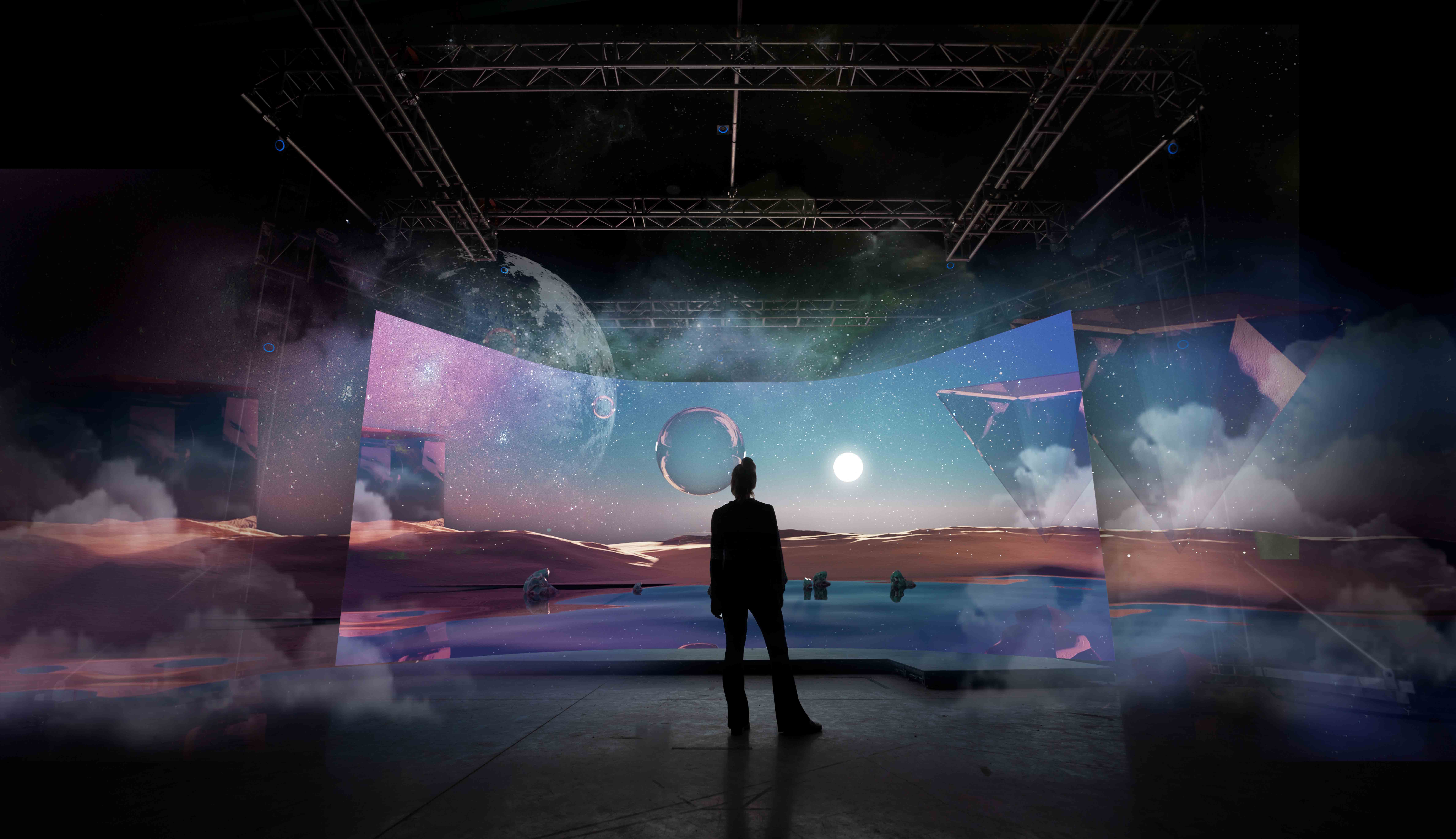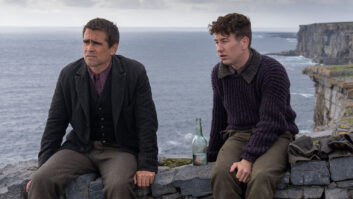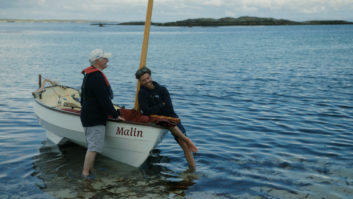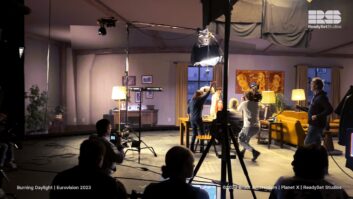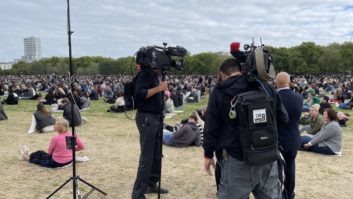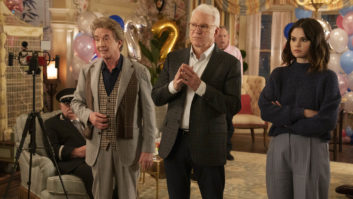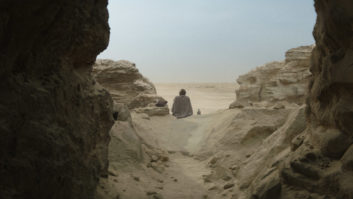Towards the end of a degree course in Production Design, Joshua Grace was awarded work experience at the BBC on a comedy entertainment show. That turned into weekly commitment, followed by the offer of a position as an art department assistant.
“I worked as an assistant on exciting projects like the MTV Europe Music Awards in Frankfurt and Barcelona and became part of the team. I taught myself CAD and took a course in technical drawing for television. This provided an arsenal of tools useful to art directors and designers. I was lucky enough to be given the opportunity to step up to being an art director at a young age and eventually started to pick up my own work. About 14 years ago this evolved to working solely on my own design projects and I put together a team.”
Grace’s clients now include BBC, ITV, Channel 4, Channel 5, MTV, Fremantle, Thames, Talkback, World of Wonder, Banijay, Endemol, Remarkable, Studio Lambert, and many more.
So, what does he see as essential information from clients in their initial brief?
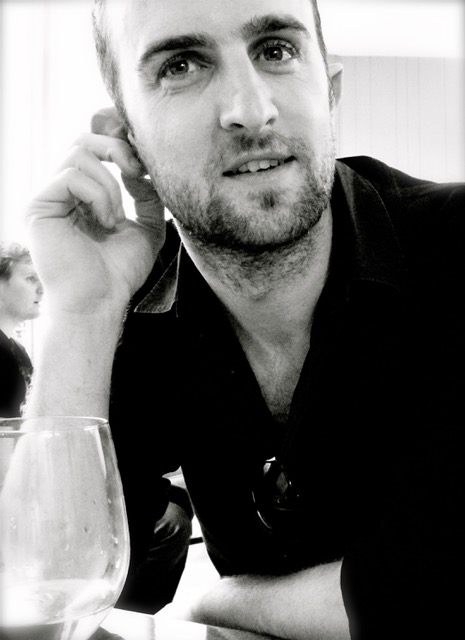
“I would normally be furnished with the format document and an idea of the direction that the client has in mind for the aesthetic look and tone of the show. It is also good to know the time slot for the show, intended audience, and a colour palette. Sometimes I might be given free rein to come up with ideas from just a chat about the show’s format.”
He says it is also key to know number of contributors or performers, any specific show mechanics, any automation the show might need, if screens are needed for visuals or to show in VT clips or to become a theatrical backdrop for music or dance numbers and so on.
Other considerations
Grace continues, “Obviously, budget is a major consideration, but so is the timeline from the brief to the first use of the set. You always have to take into account that there may be last minute notes and tweaks that might come from executive producers and the commissioners.”
The location of the set is also a consideration from the outset. Is it a fit-for-purpose television studio or concert venue with the infrastructure needed to erect scenery easily or, on the other end of the scale, an abandoned warehouse with no facilities?
With all those considerations in mind, is the workflow – from original meeting with client to full implementation – always the same?
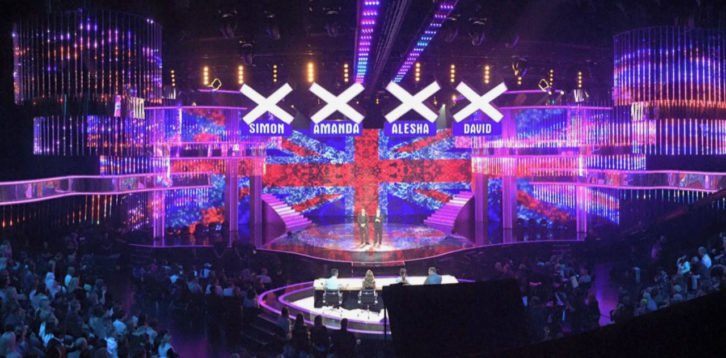
“It’s very client, and sometimes broadcaster, dependent. With long-standing collaborative working relationships there can often be an assumed level of trust and the design process is freer – in those circumstances I can present to the client an idea based on a chat in that first meeting and we hone and finesse together, collaboratively. For some new clients or those who already have the set in their mind it can be more prescriptive, sometimes they might offer a sketch or present a mood board of ideas and I take those away and work them in to a design for the show.”
Beyond the person paying for the design, other production people have some input. “On some shows my services have been engaged before, say, a director is recruited, and in that instance a design concept is created keeping in mind that once he or she is onboard we will collaborate to ensure it works for the camera plan and direction. It is much the same for lighting directors. A great deal of modern set design combines integrated lighting and I would incorporate this into the set and then make sure that the lighting designer is happy with my choices.”
Search for suppliers
He goes on to say that it is vital to work with suppliers of other pieces of integral equipment. “Over time and with experience one gathers a database of places to go for certain materials, but often the scenery fabrication company will have great swatch books and samples and new things to show which can really spark an idea. It’s worth remembering that you might also see something fantastic that will be useful down the line for future designs. Try to soak it up like a sponge!”
Technology has also meant there is less call for physical scale models of the set to be presented – but, says Grace, making full colour 3D mock-ups does still happen from time to time. “Some people like the physicality of picking up something and holding it close to peer in. I probably create two of those a year now, whereas five years ago I would have been making one for most shows. The photo realistic nature of CAD models means being able to approximate how it would look with different coloured lights and the atmosphere can really bring an idea to life. However, some producers respond far better to something that feels hand-drawn. So, I take a view on the project and the feel for the team and make a decision about whether it requires something with pencil lines, warmth and a hand drawn quality, something shiny and photo real, or a model.”
Another Anglo angle
Sally Lock studied architecture at university for seven years, but worked at other jobs until finding her true vocation as a set designer. She set up her own company about five years ago and now manages the complete process of set development and construction, from the design and concept development through to the construction and then the running of the set during filming and finally the derig and storage.
Her commissions have included work from the BBC, Sky, Netflix, ITV, Channel 4, YouTube, Sony, and Viacom.
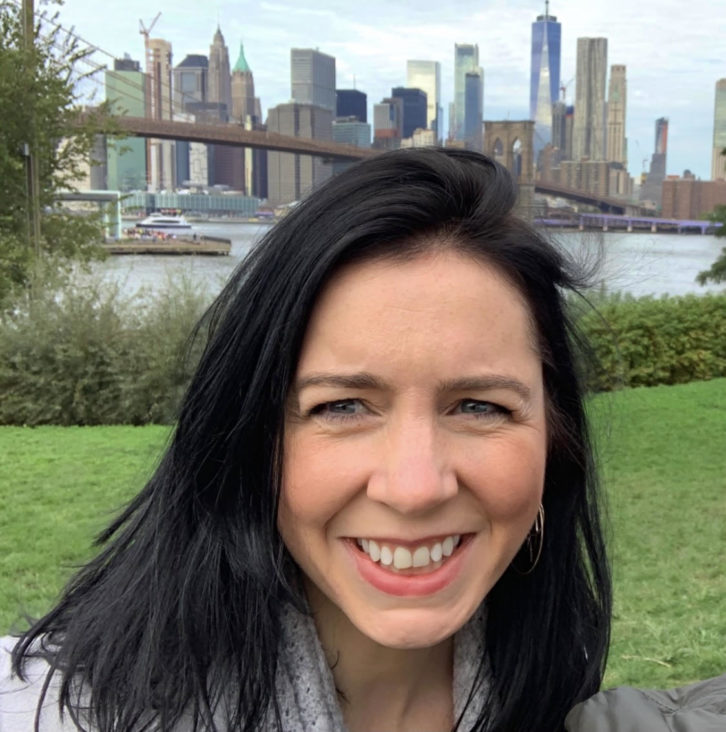
So, what does Lock require from clients in their initial brief? “I need to know what content they need to achieve, the end results they’re aiming for, and reactions they might want to develop. I need to know what the commissioner has asked for and also, I ask for style and vibe guidance. And, of course, budget.”
Beyond that, Lock states that if the set is to be built on location, there is a need to determine what restrictions might be in place, including access, neighbourhood consideration for transport and prop buying from local sources.
Part of the team
“I speak a great deal with the directors of photography to see what shots they’re are trying to achieve. If it’s wide sweeping shots, drone shots or tracking shots they can be enhanced by what I create. So, I take initial ideas, develop a design and then reflect on that with a roundtable talk. That enables us to work through ideas and further develop the design. I also need to consider any VFX or colour schemes of the show’s branding to incorporate it into the design.”
Lock explains it is rare that the workflow is the same across different productions. “You have to deliver a personalised service and design for the production team. When you work closely with directors and producers to understand fully what they want, the designer is a part of the whole process to develop the concept. The best work I do is when I am part of a team of creatives all giving each other input. You should never feel scared to tell another department how you think you can help them or them help you. It is truly teamwork.”
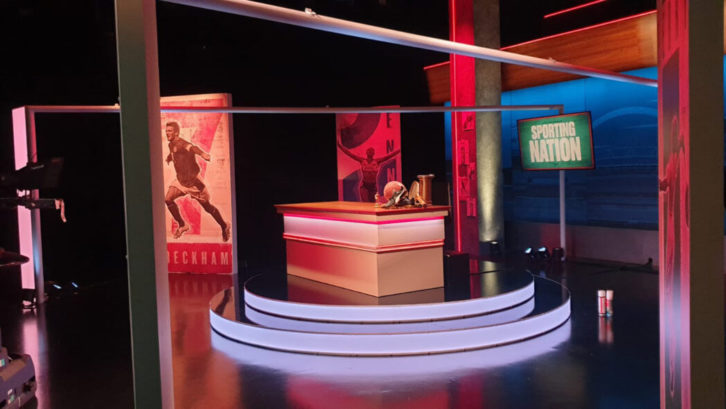
The same co-operation applies to lighting directors. “Obviously, lighting is important to the set. I give them surfaces to work with and reflect from. They ask me how much I would like them to see. I might ask them to low light areas and highlight others. Lighting might ask if I need live power for LEDs or practical lights. We all work so closely together because what everyone does heavily impacts on another department’s work. Often I’ll do a design and send this to lighting for them to plot their lights and this then goes to cameras for them to plan their moves.”
So, there is a great deal of co-operation with the production team, but what is the relationship with external suppliers?
“How closely we work with suppliers depends on what set we’re doing. A drama, for example, might be a period piece and you need some help sourcing a 1980s working TV. Other times we might need to show what is on a computer screen for a drama or sitcom. And then it’s an Awards show with screens built into the set. No project is the same, so as a designer you have to have a collection of contacts.”
Technology traits
Lock reveals that technology such as augmented and virtual reality is increasing in importance. “The changes I experienced started with HD and rebuilding sets to work with that standard. Now it’s more about what technology updates can do for you, from lenses to Visual Effects (VFX). Designers need to research and know what has been developed. I have seen some amazing virtual sets, but the problem they have is giving the talent something from which to ‘bounce’. You can’t always put someone in a green box and say ‘now act’, you have to give them something to feel the character, to feel their environment. However, there are times when it’s perfect. VFX is like another paint in your palette – so use it when you need it. But also realise you can now achieve something you thought couldn’t be done. However, I believe you’ll never get away 100 per cent from built sets and what they give everyone from directors to actors and DoPs to feel inspired by what they see in front of them.”
In Lock’s experience, three dimensional models are always required. “You use whatever skills and mediums you have to get the idea across. Graphics, 3D, models, quick sketches on paper, walking around acting out things in a space to see how much room someone needs. 3D models are an amazing tool to get a team round and talk with, pull out bits and move them. You’ll find a DoP will pick it up move it and you start to give them ideas from that about what they could create. Maybe it can help them see if a different lens might give them a better effect.”
She sums up her role by saying that the role of a production designer is integral to the development of a show or drama from start to finish. “The longer a designer is left out of the process, the harder it is to give everyone what they want later. Never underestimate what a designer brings to a project.”
The French Connection
Olivier Illouz is the set designer for Paris based studios40. For more than 10 years the company has been involved in creating sets for high-profile events such as the NRJ Music awards, the Cannes festival ceremonies, and the NET awards in Indonesia. In addition, it has produced sets for TV news of TF1 and France2.
“I have also worked for ITV Studios in the UK, and for American broadcasters such as Fremantlemedia, Warner Bros, Amazon and Netflix.”
He continues, “Most of the time we have a great deal of freedom when it comes to the design concepts. However, for Light Entertainment it is important to define precisely the spaces and the number of people who will appear. For news sets, it is vital to liaise closely with the news editors, to clearly define the needs, the number of on-screen presenters and guests, and the needs in terms of screens.”
“Of course, the size of the set or the location is also very determining, the bigger the set, the more light will be needed. Here, the technologies used are also very determining, but we always try to innovate and renew ourselves in our thinking.”
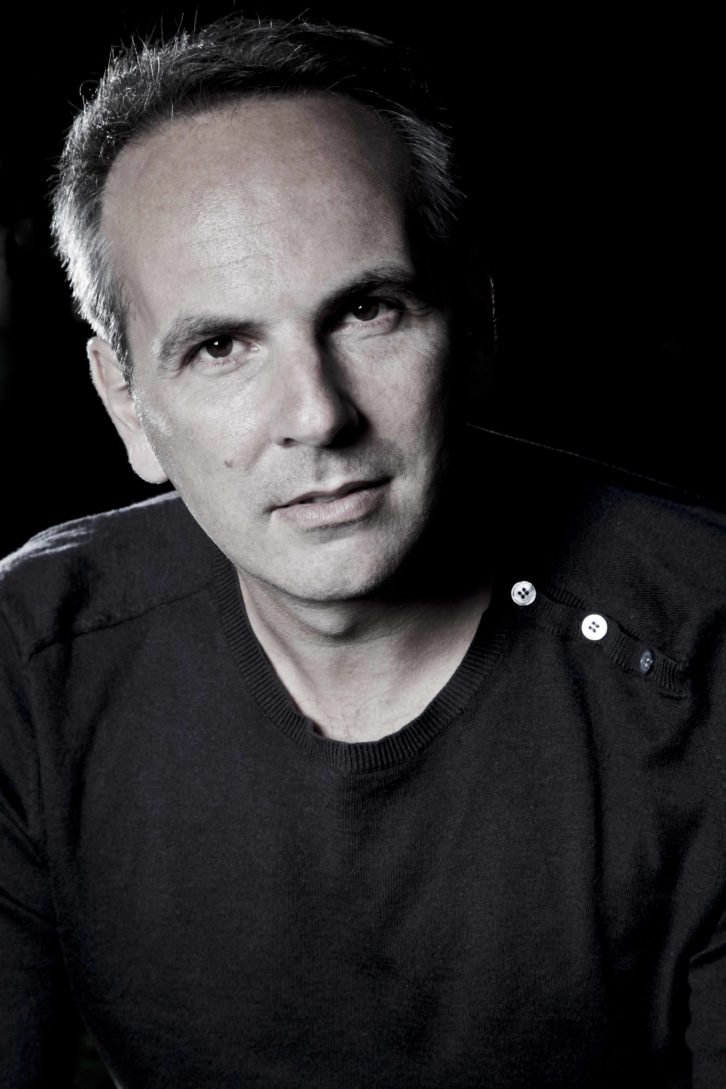
In common with other designers, Olivier Illouz says that budget remains the essential point. But, he adds, sometimes the constraint of reduced budgets allows him to find other innovative solutions. “Producers always want more, it’s up to us to find the best solutions to get there.”
When it comes to workflow from concept to completion, Illouz states that every project is different. “It is difficult to quantify our creation time, while the production time of the set design is not generally able to be compressed.”
So, how involved do production personnel become involved with design? “I would say that it really depends on the channel and the involvement of the programme directors. In general, they are very involved, but leave a lot of freedom to the creation. I work closely with the lighting supervisors, because in my thinking the set and the light are one. It is inconceivable for me to work alone; the added value of the lighting supervisors is paramount. The lighting manager is a partner I like to work with from the beginning of a project.”
In some instances, presenters are included in the design process – especially when they are also producers.
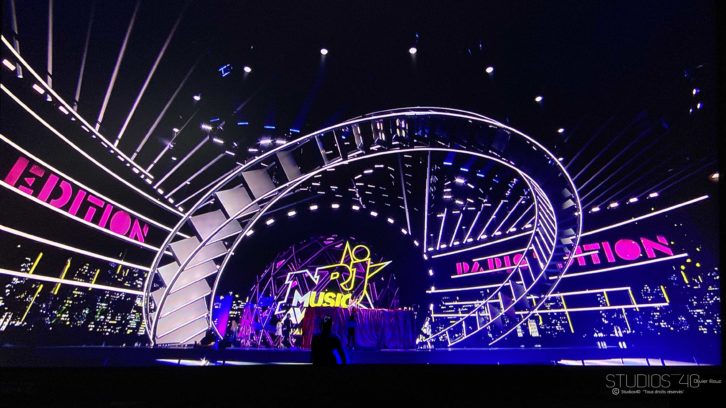
He goes on, “The role of the builder is extremely important, he is the one who makes the set really exists. Today, the sets are more and more sophisticated, the mechanics have become omnipresent, whether it is for entertainment or news sets. That means we are always looking for new materials, new textures that take the light well.”
“The new technologies such as virtual reality and augmented reality make it possible to go a little further. I like to think that extended reality is preferable at the moment to the full virtual. The idea of marrying real and fake decor interests me, I designed for the presidential elections of France2 and the soccer world cup for TF1 with this type of technology.”
Creative in Cologne
Frank Cremers launched Buero Cremers in 2001, after studying design and working as a trainee at WDR in Cologne. He is now the managing director and creative director of the company. “Our portfolio today covers most formats, from hard news to light entertainment shows to magazines. In the last decade my work focused more and more on interdisciplinary design for big, multi-functional studios for news and magazines. Our projects have included work for most public service broadcasters in Germany, ARD, ZDF, WDR, SWR, NDR, RBB, BR…to name but a few. I also carried out projects for Austrian channels Puls 4, ATV, Kurier News and supported the UEFA with presenting football events and ceremonies.”
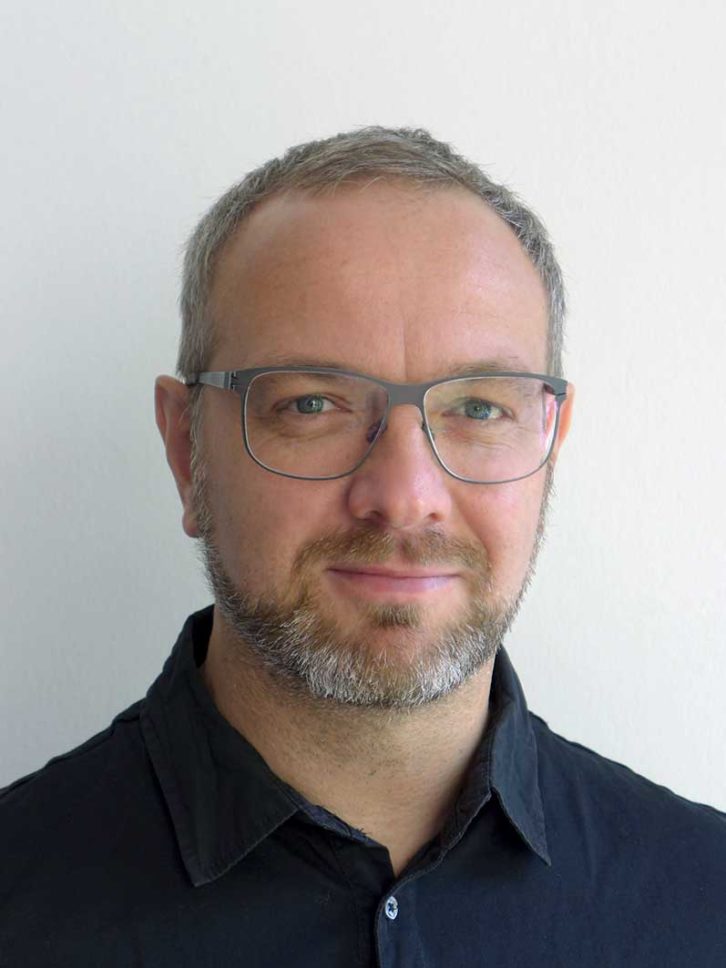
He adds that the many years of experience has led to not only more set design work, but also as a developer of comprehensive concepts, including lighting, dramaturgic flows and brand and new media implementation.
Identify
“The starting point of any project is a good brief from the client. This includes the identity of the client and format – what makes them stand out, what is the unique selling point, what are the company values and brand asset and so on. It is really important to learn about the client’s self-understanding. In addition, we need information about the budget and what the studio should offer technically.”
Cremers goes on to say that structures within broadcasters do vary, so a designer may find different people and departments are involved in the decision-making process. “That can make a great difference in terms of the time it takes to get final approval for the design. If you do design for multi-functional studios that will host more than one format, you have a great many different requirements and, accordingly, the need for coordination, communication and consultancy. That can be challenging at times.”
So, once a concept has been accepted, what involvement does Cremers have with production personnel such as programme directors and lighting supervisors? “All set design projects usually result in interdisciplinary teamwork with other creative departments. Of course, we predefine the dramaturgy and camera positions with a set’s architecture, but the finetuning is done in cooperation with the directors and programme’s editors.”
Light relief
He says that with regard to lighting the aim is always to deliver a concept based on integrated technology. “The set is almost independent from studio light sources. In addition, the set visuals already provide a good impression of the overall look. In the final stage, the lighting supervisors usually put the cherry on the cake!”
Apart from the directors and lighting supervisors, most studio designs include huge screens that need intelligent graphical imagery. Cremers says that he often works closely with on-air design agencies in order to develop comprehensive packaging.
“Since media implementation has become one of the key aspects in broadcast studios, I work very closely with technical suppliers. You often develop custom-made solutions together for clients, so you have to be in close contact and be well informed about the latest technical developments and possibilities. That also includes manufacturers of furniture, laminates, plastics, because the product ranges of the suppliers vary or change, following technical improvements and interior design trends.”
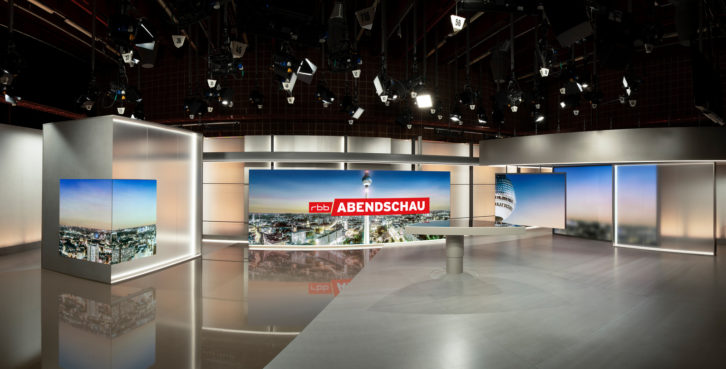
He continues, “I worked on virtual reality studios and real sets integrating virtual elements at the WDR in the late ’90s. New technologies expand the range of possibilities to present data or even entire formats. However, the technology you use must contribute to the story you want to tell. I think technology should serve a purpose in a format, otherwise it becomes a redundant gimmick. In the end, you always need a good and unique idea, no matter what technology you are working in.”
In common with other designers, Cremers has seen a move away from paper models of the proposed sets. “It has now become extremely important to render super realistic 3D images, especially because you can plan and show all the camera positions and angles. This is essential when it comes to considerations such as camera automation and display and LED positioning. We always work according to the WYSIWYG principle, ‘What you see is what you get’, so clients get all the information for decisions and the planning process. It helps to avoid bad surprises and stay in the budget!”
He concludes, “In our job, technical aspects are becoming more and more important. Choosing the right technology for the project in question is one of the ever-changing challenges for our team. No matter how much effort and time it takes to deal with technical details, low budgets and corporate structures it’s always a great joy standing in a set you designed. Creating things still drives us forward.”
